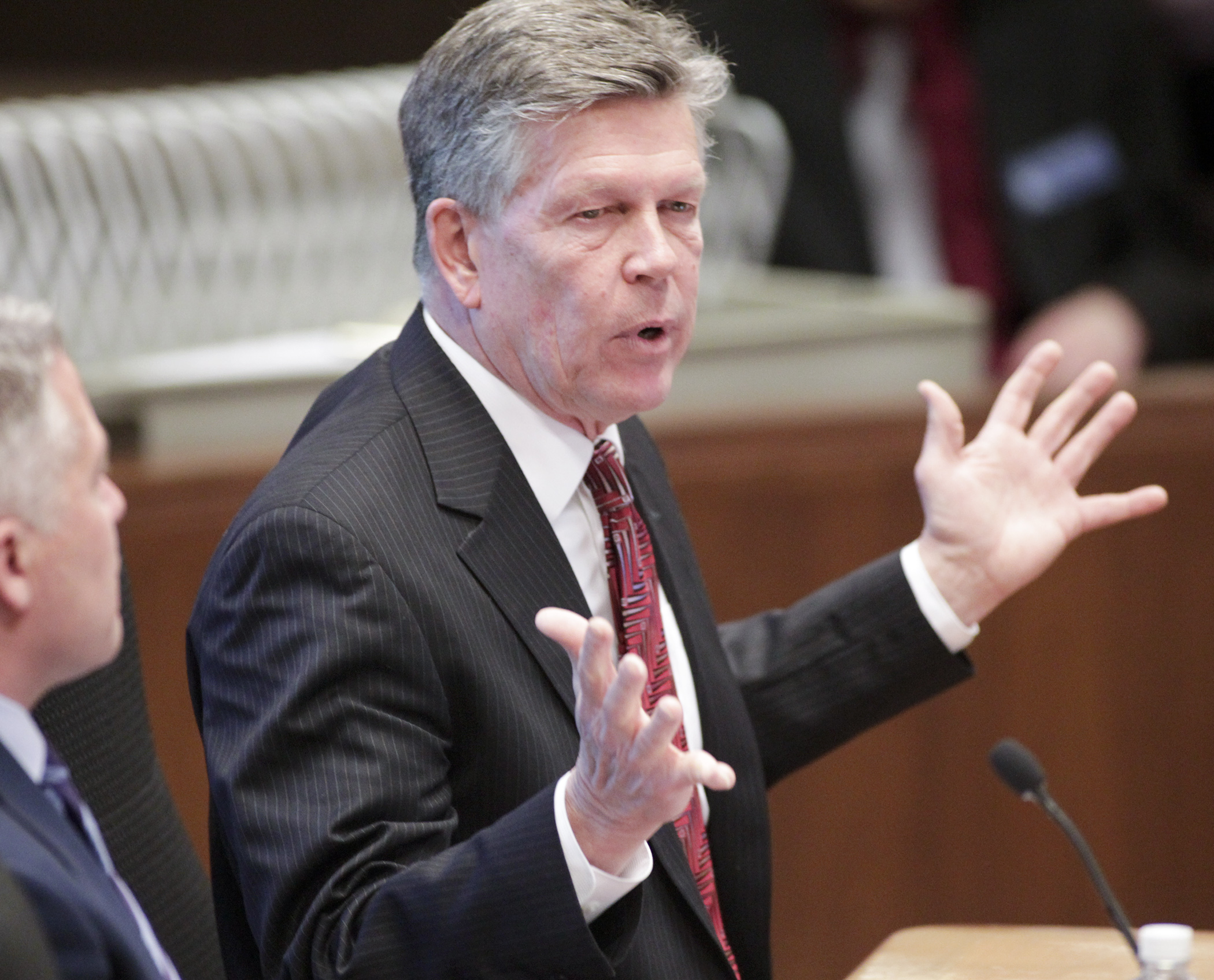Courtroom demands increase, funding sought for more judges, increased salaries

The state’s judicial branch has a pressing mathematical problem.
As caseloads continue to increase, so too, is the expected number of men and women who will no longer be wearing a black robe while overseeing who did right and wrong.
“We want to continue to be able to deliver prompt justice for the people we serve,” State Court Administrator Jeff Shorba told the House Public Safety and Security Policy and Finance Committee Wednesday. He was there urging support for the $51.44 million base budget increase sought by the third branch of state government. No action was taken.
Over the past year, major criminal filings are up 12 percent and drug-related case filings have increased by 25 percent. Between Fiscal Year 2012 and Fiscal Year 2016, the number of children protection and permanency cases has jumped by 56 percent.
An analysis shows the need for an additional trial court judge unit in the 7th and 9th judicial districts. A unit consists of a judge, court reporter and law clerk. If the $1.7 million request is approved, the number of trial court judges in the state would increase to 293. The last request for more judges came in 2007.
“These are outstate, rural areas where logistics [is an issue],” said Judge Kevin Mark, president of the Minnesota District Judges Association. “They have longer calendars somedays because, I think, they try to pack things in because people travel. It’s much easier in the urban areas to have somebody come back another day compared to when they’re driving 100-plus miles to get to court.”
No matter if the judicial branch now gets funding for more judges, they are expected to have many open positions before the decade expires. By 2020, officials say, at least 37 percent off current judges will have either retired or reached age 65. Additionally, one-third of judicial branch staff is expected to reach retirement age in the next 10 years.
To help with recruitment and retention, Shorba said $42.3 million is being requested to increase judge compensation by 3.5 percent; provide a 3.5 percent compensation pool for court employees; and fund the employer share of health insurance premium and proposed pension contribution increases.
In some counties, Mark said, judges make less than a county attorney, and less than the assistant county attorney in some cases.
“Judges are making almost life and death decisions so you want the brightest and the best,” said Rep. Tony Cornish (R-Vernon Center), the committee chair. “If the pay isn’t there, you’re going to get a lesser qualified candidate sometimes.”
Other parts of the judicial branch increased funding request are:
- $3.38 million to establish a predictable funding model for the state’s 58 treatment courts, which now rely largely on short-term and uncertain funding sources;
- $2.33 million to meet increasing costs associated with providing mandatory state- and federal-mandated services; and
- $1.97 million to improve court cybersecurity.
Related Articles
Search Session Daily
Advanced Search OptionsPriority Dailies
Ways and Means Committee OKs proposed $512 million supplemental budget on party-line vote
By Mike Cook Meeting more needs or fiscal irresponsibility is one way to sum up the differences among the two parties on a supplemental spending package a year after a $72 billion state budg...
Meeting more needs or fiscal irresponsibility is one way to sum up the differences among the two parties on a supplemental spending package a year after a $72 billion state budg...
Minnesota’s projected budget surplus balloons to $3.7 billion, but fiscal pressure still looms
By Rob Hubbard Just as Minnesota has experienced a warmer winter than usual, so has the state’s budget outlook warmed over the past few months.
On Thursday, Minnesota Management and Budget...
Just as Minnesota has experienced a warmer winter than usual, so has the state’s budget outlook warmed over the past few months.
On Thursday, Minnesota Management and Budget...